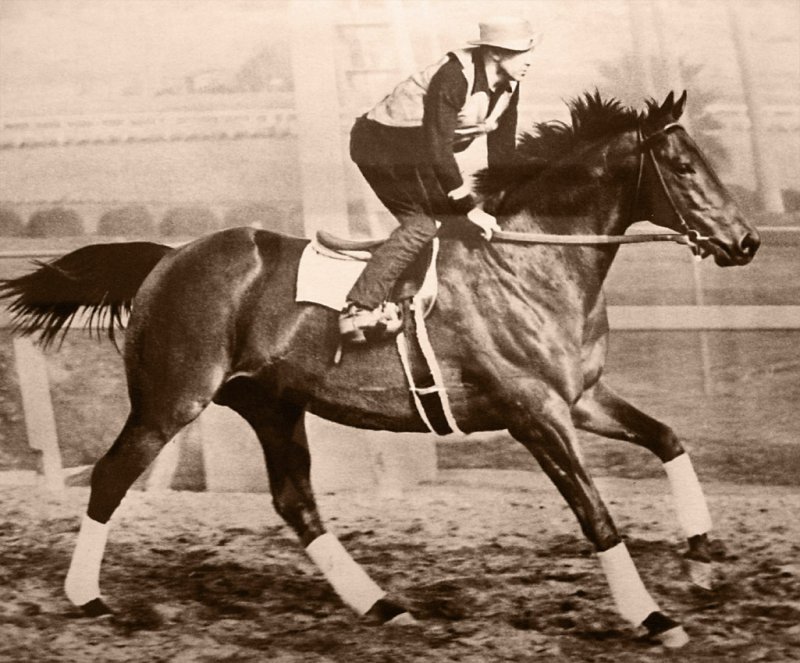BALTIMORE -- Seabiscuit, the cast-off son of a cheaply held father, today stood unchallenged as America's greatest race horse.
Sold by the Wheatley stable three years ago because he had a bad knee and was thought to be through, the bay son of Hard Tack banged down the stretch at Pimlico yesterday to beat War Admiral by four lengths and become supreme in this country.
Charlie Howard bought Seabiscuit from Ogden Mills in August in 1935. The price was $7,500. Counting the $15,000 first money in yesterday's match race Seabiscuit has banked more than $340,000 for Howard, and now only Sun Beau stands between him and the honor of being the greatest money winner in American turf history.
Not bad for a cast-off. Not bad for the son of a sire who, up until a year ago, was so lightly regarded that his stud fee was a fraction of that asked for Gallant Fox, Sir Gallahad 3rd, Reigh Count, and other stallions on A.B. Hancock's great farm at Claiborne, Ky. A failure as a racer, Hard Tack was scarcely noticed by the thousands of visitors who streamed in and out of Claiborne in 1936 for a glimpse of its illustrious sires.
But they'll start looking at him now, because in Seabiscuit he has produced a horse which, even if he retired today, would stand with the immortals of the turf. The Biscuit has the two essentials of greatness -- speed and stamina. He has them in abundance, as he proved in the match duel with War Admiral when he shaved a fifth of a second off the track record.
In War Admiral he faced a "scat" starter, a horse that fairly bullets from the barrier, takes the lead and keeps out in the eyes of his challengers -- usually. But the Admiral had never before stood side by side at the barrier with the Biscuit. And to everybody's surprise -- everybody's except Jockey George Woolf's -- it was Seabiscuit who broke first, broke like a frightened thing, winning away with a burst of speed that put him in front by a length before the three-sixteenths pole was reached.
He never was behind, though he did not lead all the way. For half a mile -- from a point in the back-stretch to the top of the stretch -- War Admiral looked him in the eye and ran as close to him as the minute hand to the hour hand at twelve noon. It was in this run, side by side, that Seabiscuit proved his superiority over the Admiral. Because when the two horses came out of this gripping drive at the top of the stretch and leveled off for home, Seabiscuit had enough left to carry on, to barrel it down to the wire. War Admiral didn't.
Spent and disheartened by his inability to shake off the Biscuit at close quarters, the chunky little son of Man o' War faded, and was unable to lift himself for a final charge despite a terrific whipping from the bat of Charley Kurtsinger.
The Admiral wasn't disgraced, mind you. He made a mighty fight for it, a brilliant fight, and the result was a race that left 40,000 spectators spectators limp with hysterical excitement.
It was a perfectly run race, with Kurtsinger saying at the finish that he had no excuses to make. The weather was flawless, and so was the track. It took the two rivals a long time to get together but when they did it was under ideal conditions and the better horse won.















